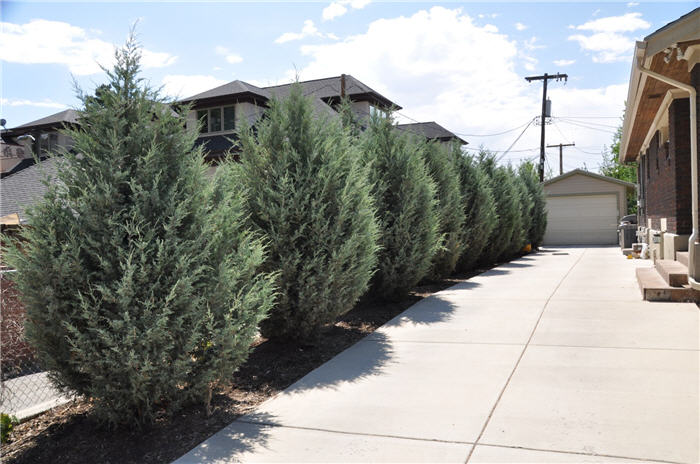| Botanical Name: Juniperus scopulorum 'Wichita Blue' | |
| Common Name: Wichita Blue Juniper |

-
Anatomy
-
Culture
-
Design
Plant Type
Tree, Conifer, Shrub
Height Range
6-12', 12-25'
Flower Color
n/a
Flower Season
n/a
Leaf Color
Grey Green, Silver
Bark Color
Grey
Fruit Color
Black, Blue
Fruit Season
Fall
Sun
Full
Water
Low, Medium
Growth Rate
Moderate, Slow
Soil Type
Sandy, Clay, Loam, Rocky, Unparticular
Soil Condition
Average, Rich, Poor, Well-drained, Dry
Soil pH
Acid, Neutral, Basic
Adverse Factors
n/a
Design Styles
English Cottage, Formal, Japanese, Mediterranean, Ranch, Spanish
Accenting Features
Fragrance, Silhouette, Specimen
Seasonal Interest
Winter
Location Uses
Background, Shrub Border, Foundation, Patio, Walls / Fences
Special Uses
Hedge, Screen, Mass Planting, Small Spaces
Attracts Wildlife
Birds
Information by: Stephanie Duer
Photographer:
Photographer:
-
Description
-
Notes
'Wichita Blue' is a handsome juniper with a broadly, pyramidal form, making it a good choice for screens, hedges, background, or specimen. Its silver-blue foliage is retained all year, even in winter. Grows about 10 to 15 feet tall and 4 to 6 feet wide, though in time it may get larger.
Grow in any soil that is well draining, including sandy, gravelly, or clay soils, but they must be well draining. Best growth in full sun. Once established, it tolerates dry soils and heat. Avoid shearing, as that will made the juniper woody and stiff; instead, prune selectively if necessary (see Guides).